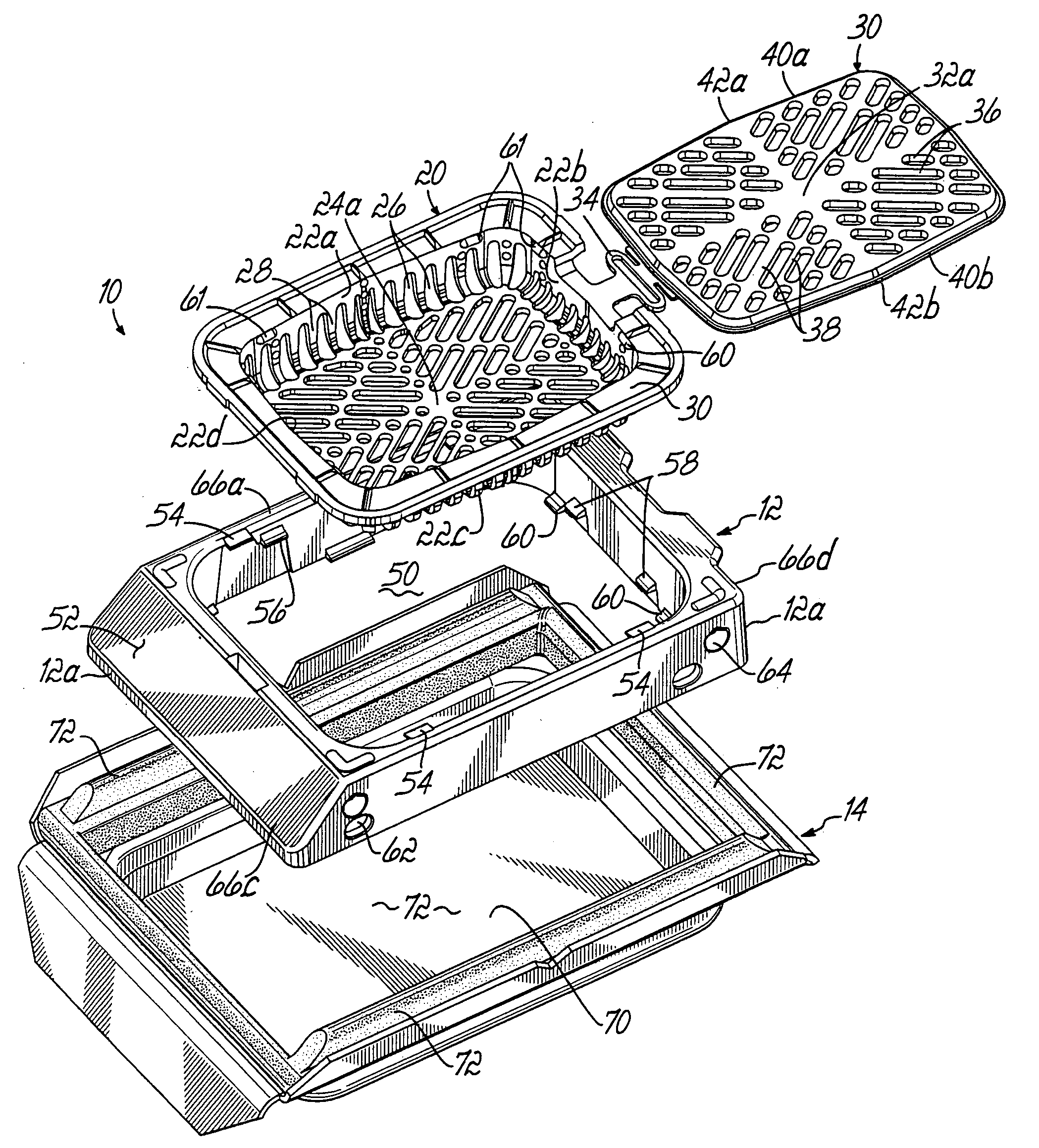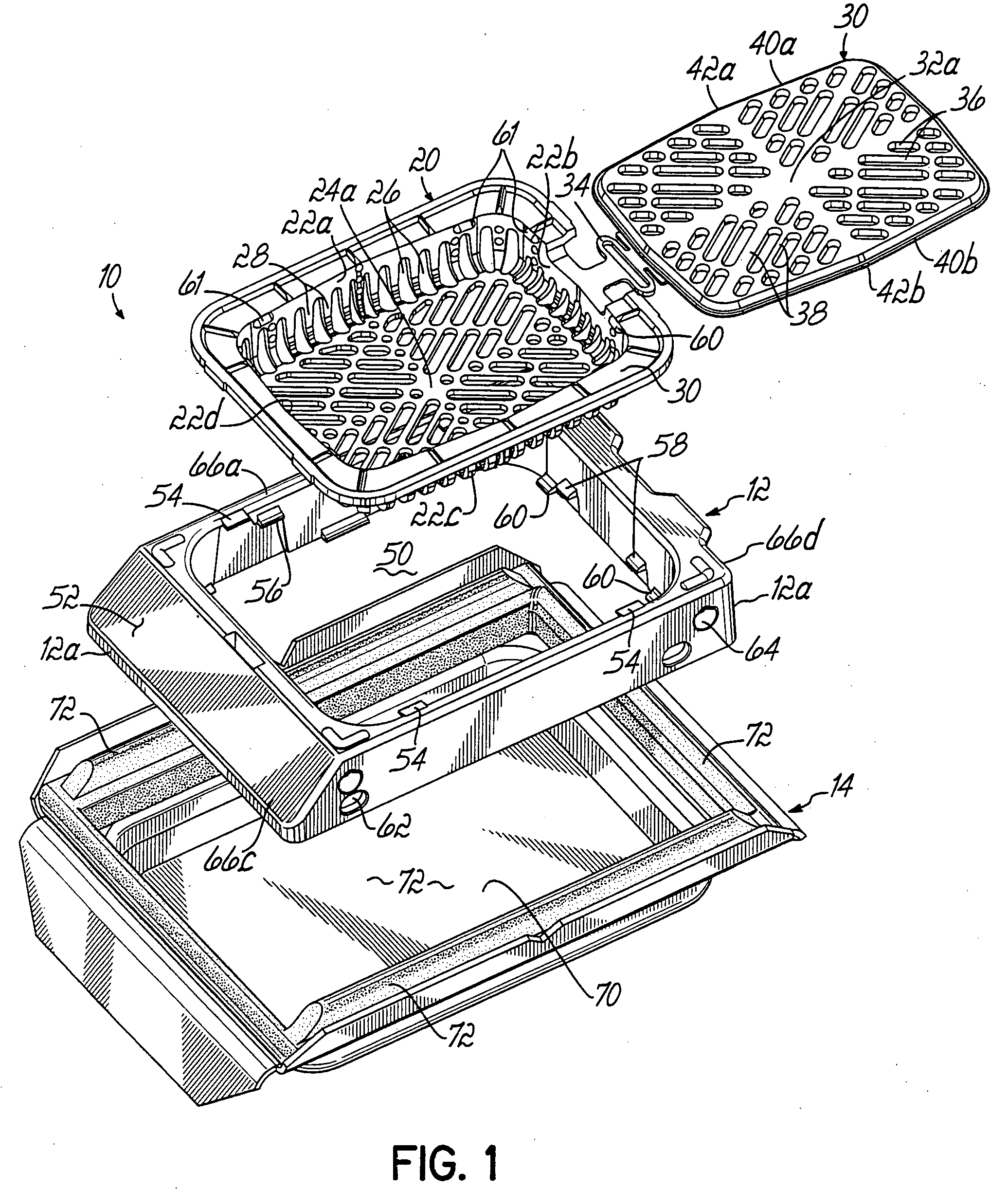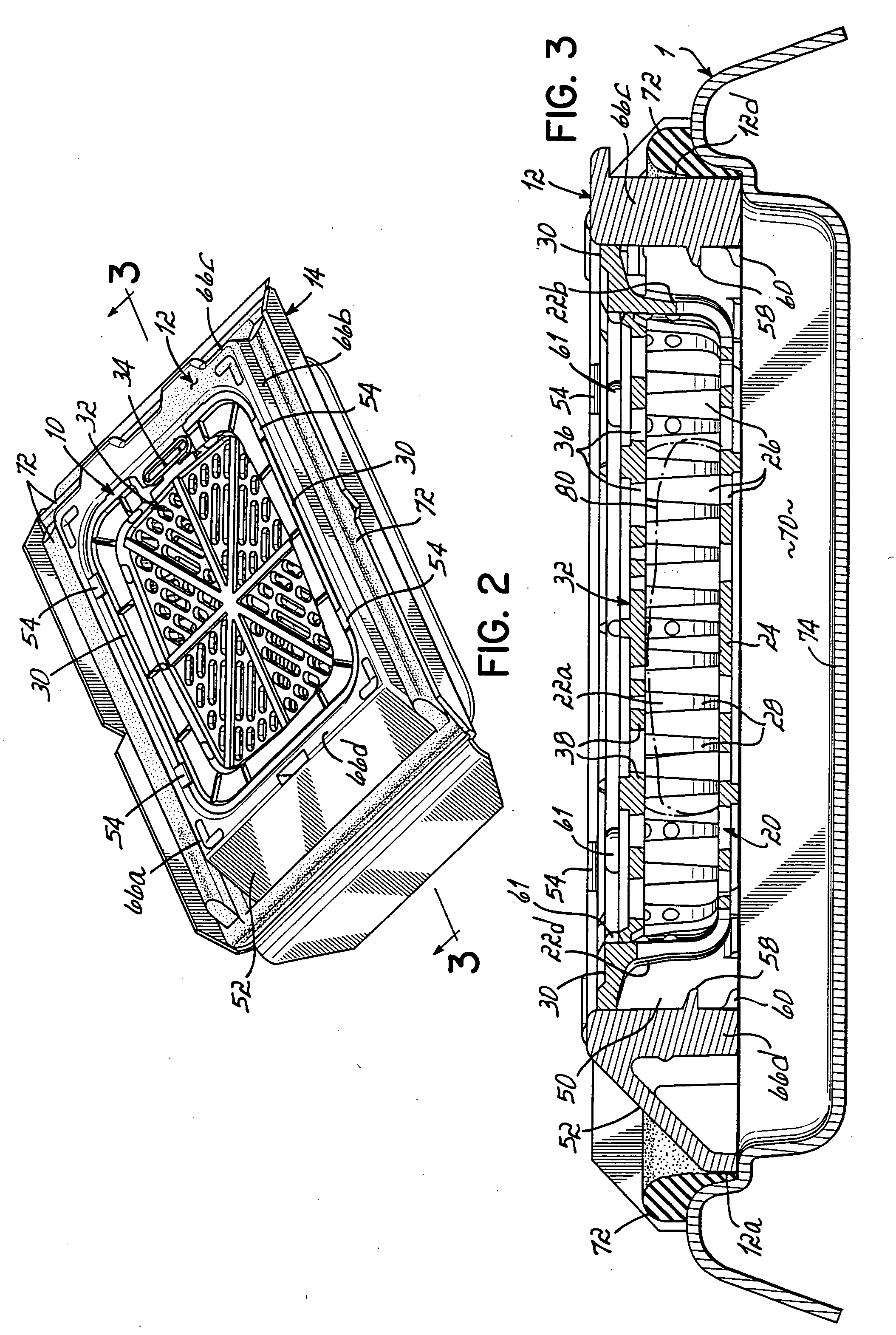Cassette and embedding assembly for handling and holding tissue samples during processing, embedding and microtome procedures, staging devices therefore, and methods therefor
a tissue sample and embedded assembly technology, applied in the field of cassettes, can solve the problems of increasing the likelihood of human error, reducing the accuracy of tissue sample processing, and reducing the processing time, so as to reduce the amount of handling time and reduce the processing steps
- Summary
- Abstract
- Description
- Claims
- Application Information
AI Technical Summary
Benefits of technology
Problems solved by technology
Method used
Image
Examples
second embodiment
[0037]FIGS. 9 and 10 illustrate a tissue cassette 120. Tissue cassette 120 includes a cassette body 122 having four side walls 124a-d surrounding an open interior and bounded on a bottom side by a bottom wall 126. Side walls 124a-d are constructed of ribs 128 separated by perforations 130 and bottom wall 126 is constructed by ribs 132 separated by perforations 134. Ribs 128 of side wall 124a are offset in a lengthwise direction relative to ribs 128 of opposite side wall 124b, as shown by distance “d” in FIG. 10. Distance “d” may vary, however, in this embodiment, on average, it is approximately 0.015″ to 0.030″. Offsetting ribs 128 in this manner ensures that a microtome blade passing through walls 124a and 124b contacts a more uniform amount of cassette material along its length. This leads to longer blade life, more uniform blade wear and more consistent high quality slices of embedded tissue. Ribs 132 and perforations 134 extend in their lengthwise direction toward a central area...
first embodiment
[0039] Detents 144 are also formed on side walls 124a-d for retaining a lid 150 in place. Lid 150 is coupled to cassette body 122 by a hinge 152. Lid 150 is formed to be stiffer than bottom wall 126 of cassette body 122 so that lid 150 may be used to press the tissue sample against the bottom wall 126 and to press the bottom wall 126 against the rigid bottom 74 of base mold 14 (FIG. 5). Lid 150 is formed by a plurality of ribs 154 generally separated by perforations 156 and each extending in a lengthwise elongated fashion toward a central area 150a of lid 150. Lid 150 further includes side edges 158a, 158b extending lengthwise thereon and having a shallow “V” shape with a central apex 160a, 160b. Angle α (FIG. 10) is preferably about 4°. As with the first embodiment, the shape of side edges 158a, 158b complements similar shape of side walls 124a, 124b of cassette body 122. In this regard, these side walls 124a, 124b, either one of which may be the initial wall cut in the microtome, ...
PUM
| Property | Measurement | Unit |
|---|---|---|
| length | aaaaa | aaaaa |
| area | aaaaa | aaaaa |
| movement | aaaaa | aaaaa |
Abstract
Description
Claims
Application Information
 Login to View More
Login to View More - R&D
- Intellectual Property
- Life Sciences
- Materials
- Tech Scout
- Unparalleled Data Quality
- Higher Quality Content
- 60% Fewer Hallucinations
Browse by: Latest US Patents, China's latest patents, Technical Efficacy Thesaurus, Application Domain, Technology Topic, Popular Technical Reports.
© 2025 PatSnap. All rights reserved.Legal|Privacy policy|Modern Slavery Act Transparency Statement|Sitemap|About US| Contact US: help@patsnap.com



